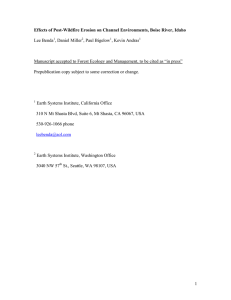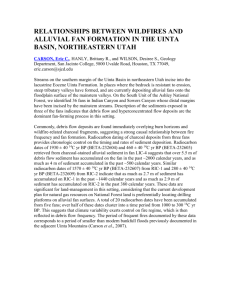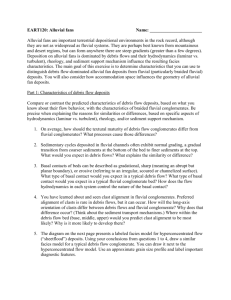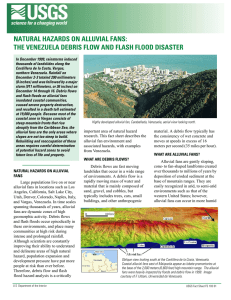Alluvial Fan Environments Badwater Fan, Death Valley Mars
advertisement
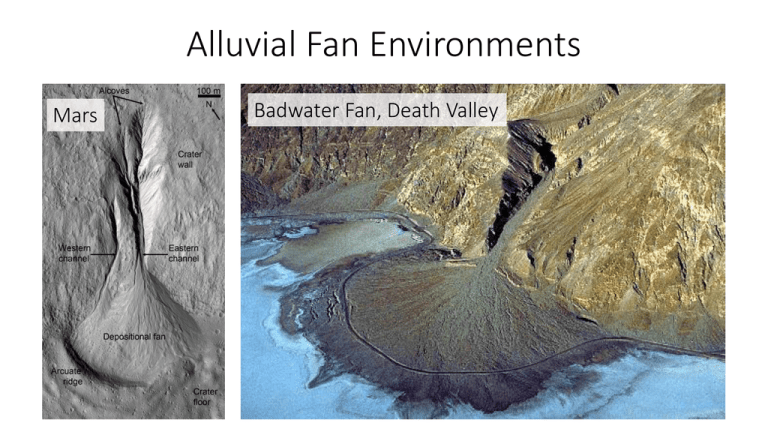
Alluvial Fan Environments Mars Badwater Fan, Death Valley Alluvial fans vs. rivers Distinct break in gradient separates fans (steeper) from rivers (shallower) Alluvial fans characterized by different hydrodynamic processes and resulting facies than rivers Water flow nearly always supercritical on fans Supercritical flow Subcritical Alluvial fan sediments Some alluvial fans, especially larger low-gradient fans, are dominated by deposits from hyperconcentrated flows and from sheetflow Hyperconcentrated flow Miocene sheetflood deposits, Fish Canyon, California Differs from braided fluvial system by lack of downstream accretion elements and bar forms Usually clast-supported, imbricated Crude normal grading from unhindered settling of grains in turbulent flow Turbulence creates erosive base Alluvial fan sediments Smaller alluvial fans with higher relief tend to be dominated by deposition from debris flows Active depositional lobe occasionally shifts laterally to produce fan-shaped cone of sediment Debris flows are a type of sediment gravity flow (a mixture of water and sediment particles transported by gravity without help from moving ambient water) Sediment gravity flows classified on basis of (1) rheology and (2) sedimentsupport mechanism Flow rheology Rheology describes the deformation of a fluid under a given shear stress For a Newtonian fluid like water, t = m du/dy Where m is the fluid viscosity Flow rheology Debris flows have a plastic rheology, with a yield strength Yield strength means that the flow will not move or deform until a certain stress has been applied Viscosity m also constant for debris flow of given composition t = k + m du/dy Shear stress < yield strength causes central part of flow to move as solid plug Friction from interaction of moving flow with the ground (and air) creates shear stress at base and top of flow Laminar flow (due to high viscosity) where shear stress > yield strength When driving force from gravity is too low (i.e. slope too gentle), shear stress drops below yield strength and flow “freezes” in place Sediment-support mechanism How can debris flows carry such large boulders? What forces act on boulder in debris flow? D, rs k rm Gravity: 4/3 p D3 rs g Buoyancy: 4/3 p D3 rm g Matrix Strength: Z k p D2 Gravity: 4/3 p D3 rs g D, rs k rm Buoyancy: 4/3 p D3 rm g Matrix Strength: Z k p D2 Matrix density (rm) can be high (as much as 2 g/cm3, compared to 2.73.0 g/cm3 for rocks) due to the high sediment concentration Additional buoyancy contribution in sediment-rich mixtures: Upward force on particles Weight of overlying Pressure gradient sediment+water Gravity: 4/3 p D3 rs g D, rs k rm Buoyancy: 4/3 p D3 rm g Matrix Strength: Z k p D2 Debris flows can have high yield strength k – even large boulders do not exert sufficient shear stress on fluid to overcome k What gives a debris flow matrix strength? Clay minerals form network by electrostatic or atomic forces Matrix strength a function of clay content (possible at only 2-4% clay) Holocene debris flow deposits Baños, Ecuador


